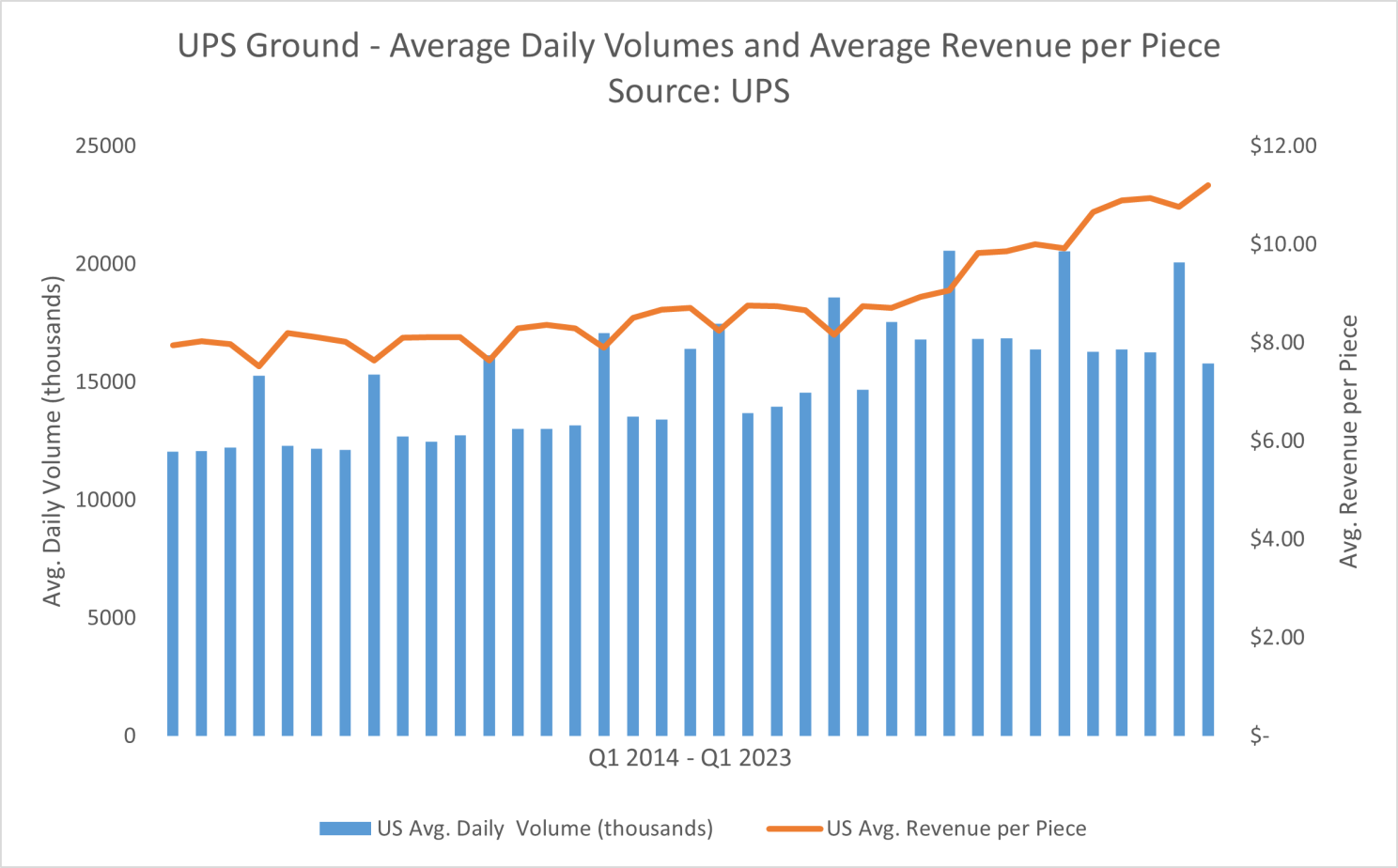
I’m Jay Kent, managing director of SLB Performance, a consulting firm that helps companies reduce supply chain costs, implement BI tools, and improve in-stocks and customer service. After 25 years of leading some of the most complex supply chains in the industry, I began advising companies in multiple industries and verticals. To mitigate costs and improve efficiencies, it’s important to understand the market. So twice a month, I’ll share parcel news and thoughts. Be sure to hit the subscribe button to receive the latest newsletter in your LinkedIn notifications.
UPS reported its Q1 earnings this week, and not surprising they were disappointing. So much of UPS’ volume declines (still above the pre-pandemic period) were attributed to macroeconomics, and yes, indeed, we’re seeing a hesitant consumer, inventory levels that are still too high, and declines in industrial production.
UPS is in a ‘manage and control what they can’ kind of mode as they protect their revenue per package. As a result, they reduce headcount, reduce block hours further in Q2, and continue to follow its Total Service Plan, which was introduced last year to help UPS better utilize its automated facilities by moving volume from legacy facilities to newer and more automated facilities.

In addition, rumor has it that UPS is no longer delivering to certain US zip codes due to changes in how it handles rural locations.
Meanwhile…. the Teamsters contract. Yes, plenty of talk on that topic, and Max Garland of Supply Chain Divesums it up well. UPS expects a ‘win, win, win’ by the end of July and believes they and the Teamsters are aligned on several items, such as weekends and heat impacts on package drivers.
In other news from the past couple of weeks….
- Middle-mile online platform WARP introduced DirecTrack, which provides real-time visibility of freight movements at the truck, pallet, and parcel level, including temperature monitoring. According to WARP, shippers using the platform receive this information at no additional cost.
- GLS Canada purchased four Lion6 100% electric trucks. “These four zero-emission trucks will replace the current diesel trucks operated by GLS Canada,” said Rick Barnes, President of GLS Canada, in a statement. “Two of these trucks will be driven by GLS drivers in Quebec, and the other two will be used in Western Canada by Rosenau Transport, which was acquired by GLS in 2021. This represents a saving of up to 400 tons of greenhouse gas (GHG) emissions each year, equivalent to almost 80 cars on the road or 40,000 liters of fossil fuel saved per year. In addition to reducing GHGs, the new vehicles reduce noise pollution and have a positive impact on air quality.”
- In another story from Max Garland, New York City will begin testing local delivery hubs this summer to reduce truck traffic and emissions in favor of more sustainable transportation options, according to an April 6 news release from the city’s Department of Transportation (DOT). Before the COVID-19 pandemic, 40% of deliveries went to residential customers, per a city DOT presentation. Today, that figure is now about 80%. This jump in activity has sparked concerns about the negative impacts on the city’s environment and resident safety as double parking and sidewalk obstructions become more prevalent.
- As part of its network restructure, FedEx Express is shutting down pilot bases in Alaska, California, and Germany. “As the global business environment continues to evolve, FedEx has made the decision to relocate its pilots and close its 757 crew base in Cologne, Germany (CGN) and its MD-11 crew bases in Anchorage, Alaska (ANC) and Los Angeles, California (LAX). The decision only affects the base of the crews operating these flights and will not impact our current service,” FedEx said. “Our operations in these markets continue to play an important role in the global FedEx network, and the flexibility of this network enables us to make adjustments that best meet the needs of our customers throughout the world. As with any base closure, the process is a gradual one, and this relocation will occur without any disruption to our operations.”
That’s it for now. Comments are always welcome. Let me know what I missed. Stay tuned for the next newsletter next week, and don’t forget to hit the subscribe button to ensure you receive it in your LinkedIn notices.
-Jay